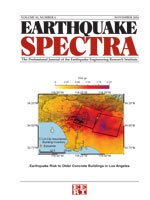 Andy Seifried of LCI has co-authored a technical paper titled, “Spectral Variability and Its Relationship to Structural Response Estimated from Scaled and Spectrum-Matched Ground Motions” with Jack Baker of Stanford University.
Andy Seifried of LCI has co-authored a technical paper titled, “Spectral Variability and Its Relationship to Structural Response Estimated from Scaled and Spectrum-Matched Ground Motions” with Jack Baker of Stanford University.
Conditional spectral dispersion (CSD) is a measure of response spectrum variability that implicitly characterizes the variety of spectral shapes within a suite of ground motions. It is used here to explain the discrepancy between median structural demands estimated from different suites of scaled and spectrum-matched ground motions. Performing response history analyses with spectrum-matched ground motions is known to result in unconservatively biased median demand estimates in some cases. Herein, several suites of scaled ground motions with equivalent median intensities and varying levels of CSD are selected. A single suite of spectrum-matched ground motions is also created. These records are used to analyze the responses of inelastic single-degree-of-freedom and first-mode-dominated multiple-degree-of-freedom structural systems. Collapse capacities are also examined. A consistent trend between CSD and resulting median responses indicates that the bias phenomenon can be fully explained by an asymmetric relationship between conditional spectral ordinates at periods affecting inelastic response. A copy of publication is available at Earthquake Spectra website.
